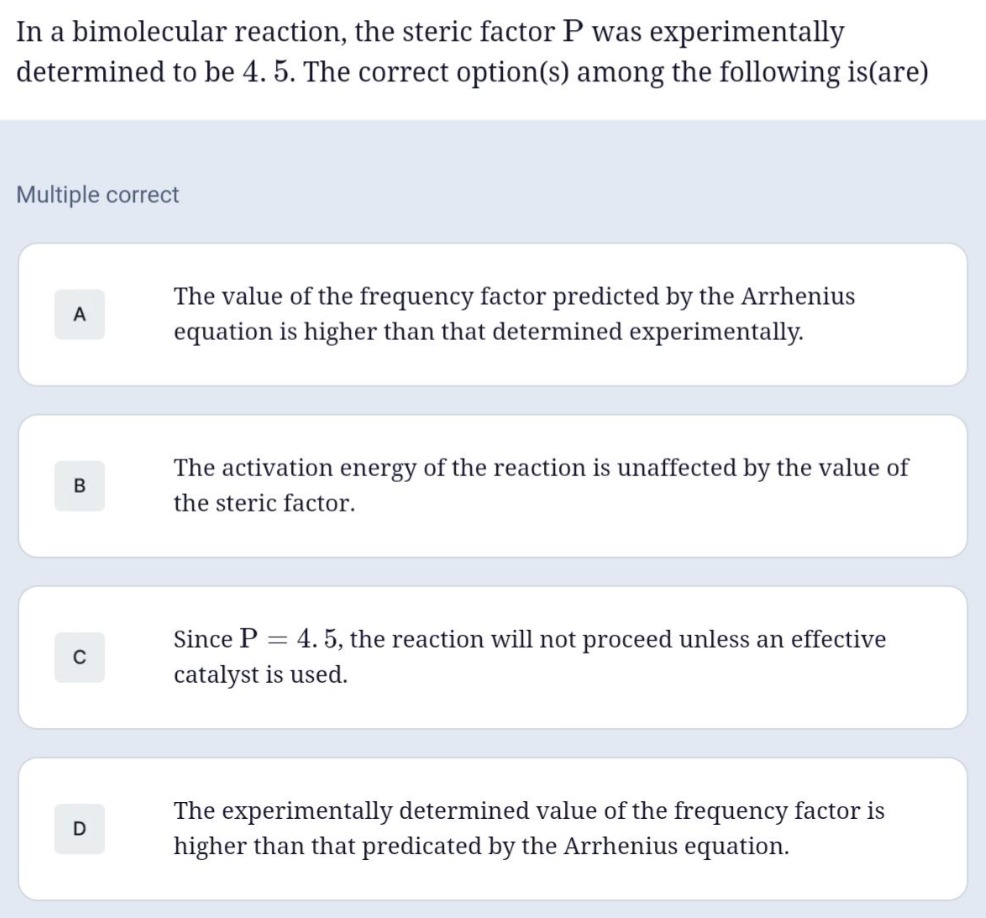Question
Question: In a bimolecular reaction, the steric factor P was experimentally determined to be 4. 5. The correct...
In a bimolecular reaction, the steric factor P was experimentally determined to be 4. 5. The correct option(s) among the following is(are)

A
The value of the frequency factor predicted by the Arrhenius equation is higher than that determined experimentally.
B
The activation energy of the reaction is unaffected by the value of the steric factor.
C
Since P = 4.5, the reaction will not proceed unless an effective catalyst is used.
D
The experimentally determined value of the frequency factor is higher than that predicated by the Arrhenius equation.
Answer
Options B and D
Explanation
Solution
Solution Explanation:
- The Arrhenius equation is written as
k=Aexp(RT−Ea).
Here, the activation energy Ea is independent of the steric factor P. - In collision theory, the frequency factor is given by
Atheo=Z (from molecular collisions).
To account for proper molecular orientation and other effects, a steric factor P is introduced so that
Aexp=P⋅Z. - With P=4.5 (i.e. >1), the experimental frequency factor Aexp is 4.5 times larger than the basic collision frequency Z.
- Hence, the activation energy is unaffected by P (making Option B true) and the experimentally determined frequency factor is higher than the value predicted by simply using collision frequency (making Option D true).
Answer: Options B and D
